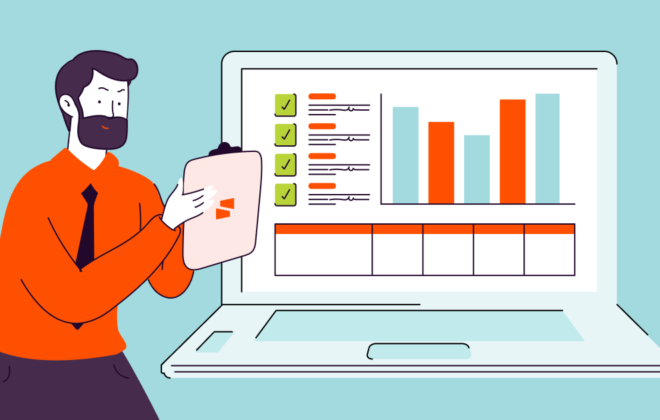Creating Data-Driven Sales Enablement Strategies
Sales enablement is a multifaceted approach to equipping sales teams with the resources, tools, and information necessary to engage with prospects and close deals effectively. It encompasses a wide range of strategies, technologies, and processes designed to streamline the sales process and drive revenue growth.
What is Sales Enablement?
Sales enablement can be defined as the strategic alignment of people, processes, and technology to empower sales teams and enhance their productivity and effectiveness. It involves providing sales representatives with the right content, training, and support at each stage of the buyer’s journey to facilitate successful interactions with potential customers.
Evolution of Sales Enablement
Sales enablement has undergone significant evolution over the years, driven primarily by advancements in technology and changes in consumer behavior. Historically, sales enablement was focused mainly on providing sales collateral and training materials to representatives. However, with the rise of digitization and data analytics, modern sales enablement strategies have become more sophisticated, leveraging technology to deliver personalized experiences and drive better outcomes.
The Data Behind Sales Enablement
Data plays a central role in informing and guiding sales enablement strategies. By leveraging data analytics and insights, organizations can gain a deeper understanding of their customers, identify trends and patterns, and make informed decisions to drive sales effectiveness.
Importance of Data in Sales Enablement
In today’s hyper-competitive business landscape, data has emerged as a critical asset for organizations looking to gain a competitive edge. By harnessing the power of data, companies can unlock valuable insights into customer behavior, preferences, and needs, enabling them to tailor their sales approach accordingly.
Types of Data Utilized
Sales enablement relies on various types of data to inform decision-making and drive results. These may include:
- Customer Data: Demographic information, purchase history, and interaction touchpoints.
- Sales Performance Metrics: Key performance indicators (KPIs) such as conversion rates, average deal size, and sales cycle length.
- Market Trends and Analysis: Industry insights, competitor activity, and market forecasts.
- Competitor Insights: Analysis of competitors’ strengths, weaknesses, and positioning strategies.
Developing a Data-Driven Mindset
To effectively leverage data in sales enablement, organizations must foster a culture of data literacy and empowerment among their sales teams.
Cultivating Data Literacy Among Sales Teams
Empowering sales representatives with the skills and knowledge necessary to interpret and utilize data is essential for driving success in a data-driven sales environment. It may involve:
- Training and Education Programs: Providing ongoing training and professional development opportunities to enhance data literacy skills.
- Integration of Data Tools into Sales Processes: Incorporating data analytics tools and technologies into everyday sales operations to facilitate data-driven decision-making.
Leveraging Data for Strategic Decision-Making
Data-driven decision-making involves identifying and prioritizing key metrics and insights that drive business outcomes.
Identifying Key Performance Indicators (KPIs)
Determining which metrics are most relevant to your organization’s sales objectives is crucial for effective decision-making. Common KPIs in sales enablement may include:
- Conversion Rate: The percentage of leads that result in a successful sale.
- Sales Velocity: The rate at which deals move through the sales pipeline.
- Customer Acquisition Cost (CAC): The cost of acquiring a new customer.
- Customer Lifetime Value (CLV): The total revenue a customer is expected to generate over their lifetime.
Utilizing Predictive Analytics
Predictive analytics leverages historical data and statistical algorithms to forecast future trends and outcomes. By applying predictive models to sales data, organizations can anticipate customer behavior, identify opportunities for upselling or cross-selling, and optimize resource allocation.
Implementing Data-Driven Strategies
Once a data-driven mindset has been established, organizations can begin implementing strategies that leverage data to drive sales effectiveness.
Harnessing Customer Insights
Understanding the needs, preferences, and pain points of your target audience is essential for crafting compelling sales messages and offers.
Understanding Buyer Personas
Developing detailed buyer personas can help sales teams better understand their target audience and tailor their messaging and approach accordingly. Buyer personas typically include demographic information, pain points, goals, and preferred communication channels.
Mapping Customer Journeys
Analyzing the various touchpoints and interactions that prospects have with your brand throughout the buying process can provide valuable insights into their behavior and preferences. By mapping the customer journey, organizations can identify opportunities to engage prospects more effectively and remove friction points that may impede the sales process.
Utilizing Sales Performance Metrics
Tracking and analyzing sales performance metrics is essential for evaluating the effectiveness of sales enablement initiatives and identifying areas for improvement.
Setting Realistic Goals and Benchmarks
Establishing clear, measurable goals and benchmarks ensures that sales teams have a roadmap for success and can track their progress over time.
Monitoring and Adjusting Strategies Accordingly
Regularly monitoring key metrics and performance indicators allows organizations to identify trends and patterns and make data-driven adjustments to their sales strategies as needed.
Integrating Technology Solutions
Technology plays a crucial role in modern sales enablement, providing sales teams with the tools and resources they need to succeed.
CRM Systems
Customer Relationship Management (CRM) systems centralized customer data, interactions, and communications, enabling sales teams to track leads, manage relationships, and forecast sales more effectively.
AI-Powered Sales Tools
Artificial intelligence (AI) technologies such as predictive analytics, chatbots, and sales automation software can help streamline sales processes, identify opportunities, and deliver personalized experiences at scale.
Driving Sales Enablement Through Data
With the right data-driven strategies in place, organizations can drive sales enablement initiatives that deliver tangible results.
Personalization and Customization
Personalizing sales interactions and offers based on customer data and preferences can significantly enhance engagement and conversion rates.
Tailoring Content and Communication
Delivering targeted content and messaging that speaks to the specific needs and interests of individual prospects can help sales teams build rapport and trust with potential customers.
Adaptive Sales Processes
Adapting sales processes and strategies based on real-time data and feedback allows organizations to respond quickly to changing market conditions and customer needs.
Streamlining Sales Operations
Automating routine tasks and optimizing sales workflows can help sales teams work more efficiently and focus their time and energy on high-value activities.
Automating Routine Tasks
Automating repetitive tasks such as data entry, lead scoring, and follow-up emails frees up sales representatives to focus on building relationships and closing deals.
Optimizing Sales Funnels
Analyzing and optimizing the various stages of the sales funnel can help organizations identify bottlenecks, streamline processes, and improve overall conversion rates.
Enhancing Sales Team Collaboration
Effective collaboration between sales, marketing, and other departments is essential for aligning efforts and driving cohesive sales enablement strategies.
Shared Data Platforms
Implementing shared data platforms and collaboration tools enables cross-departmental communication and knowledge sharing, ensuring that everyone is working towards common goals.
Cross-Departmental Integration
Breaking down silos between sales, marketing, and customer service departments allows organizations to leverage insights and resources more effectively, ultimately driving better outcomes for the business as a whole.
Measuring Success and ROI
Measuring the success of sales enablement initiatives and quantifying the return on investment (ROI) is critical for demonstrating value and guiding future decision-making.
Establishing Metrics for Evaluation
Determining which metrics to track and evaluate ensures that organizations have a clear understanding of the impact of their sales enablement efforts.
Quantitative and Qualitative Measures
Combining quantitative metrics such as revenue growth, conversion rates, and win rates with qualitative feedback from sales teams and customers provides a more comprehensive view of performance.
Feedback Loops
Establishing feedback loops between sales, marketing, and other departments allows organizations to gather insights and iterate on their sales enablement strategies in real-time.
Analyzing Return on Investment (ROI)
Calculating the ROI of sales enablement initiatives helps organizations justify investment decisions and allocate resources more effectively.
Cost-Benefit Analysis
Comparing the costs of implementing sales enablement programs with the benefits they deliver allows organizations to assess their overall value and prioritize investments accordingly.
Long-Term Value Generation
While immediate results are significant, it’s essential to consider the long-term impact of sales enablement initiatives on customer relationships, brand reputation, and overall business growth.
Overcoming Challenges and Pitfalls
Despite the benefits of data-driven sales enablement, organizations may encounter various challenges and pitfalls along the way.
Data Privacy and Compliance
Ensuring compliance with data privacy regulations such as the General Data Protection Regulation (GDPR) and the California Consumer Privacy Act (CCPA) is essential for protecting customer information and maintaining trust.
GDPR, CCPA, and Other Regulatory Considerations
Navigating the complex landscape of data privacy regulations requires organizations to implement robust policies and procedures to safeguard customer data and mitigate the risk of non-compliance.
Ensuring Ethical Data Practices
Ethical considerations such as transparency, consent, and data security are paramount in the collection, use, and storage of customer data.
Resistance to Change
Implementing data-driven sales enablement strategies may encounter resistance from employees who are accustomed to traditional sales methods or skeptical of new technologies.
Addressing Cultural Shifts
Fostering a culture of innovation, continuous learning, and adaptation is essential for overcoming resistance to change and driving successful sales enablement initiatives.
Demonstrating Value and Benefits
Effectively communicating the value proposition and benefits of data-driven sales enablement to stakeholders across the organization is crucial for gaining buy-in and support.
Conclusion
Creating data-driven sales enablement strategies is essential for organizations looking to thrive in today’s competitive business landscape. By harnessing the power of data analytics and insights, companies can gain a deeper understanding of their customers, streamline sales processes, and drive revenue growth.
From leveraging customer insights to optimizing sales operations and measuring ROI, the possibilities for data-driven sales enablement are endless. However, success in this endeavor requires a commitment to fostering a data-driven mindset, embracing technology solutions, and overcoming challenges along the way. Ultimately, organizations that prioritize data-driven sales enablement stand to gain a significant competitive advantage and achieve sustainable growth in the long term.
Blog Categories
- 3D Animation (5)
- Company News (2)
- Design Graphics (1)
- Healthcare Operations (7)
- Industry News (9)
- Medical Training (1)
- Sales Enablement (5)
- Software Developing (3)
- Virtual/Augmented Reality (11)




